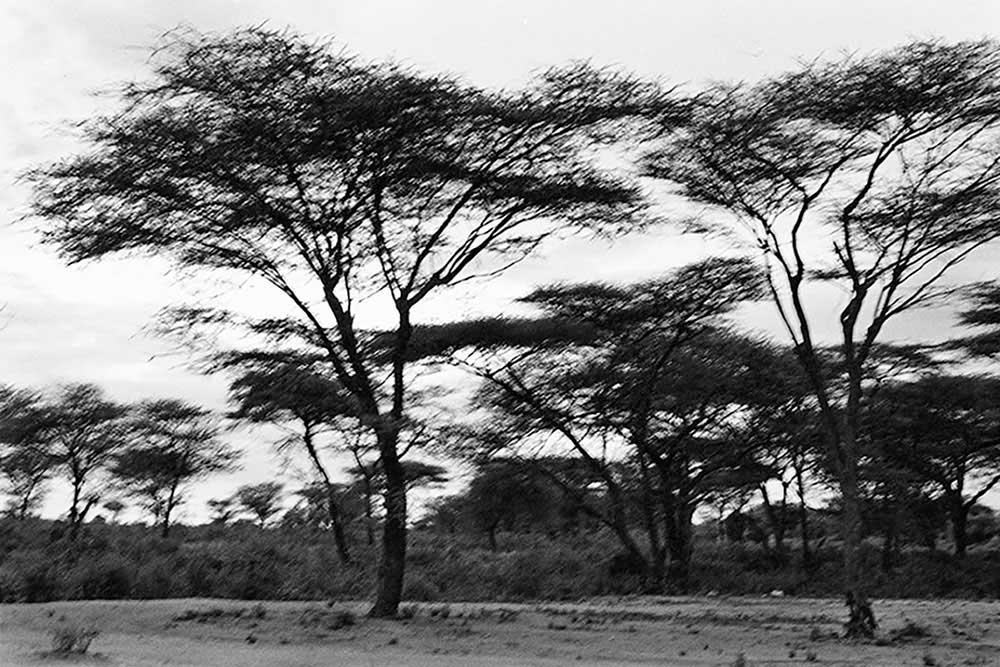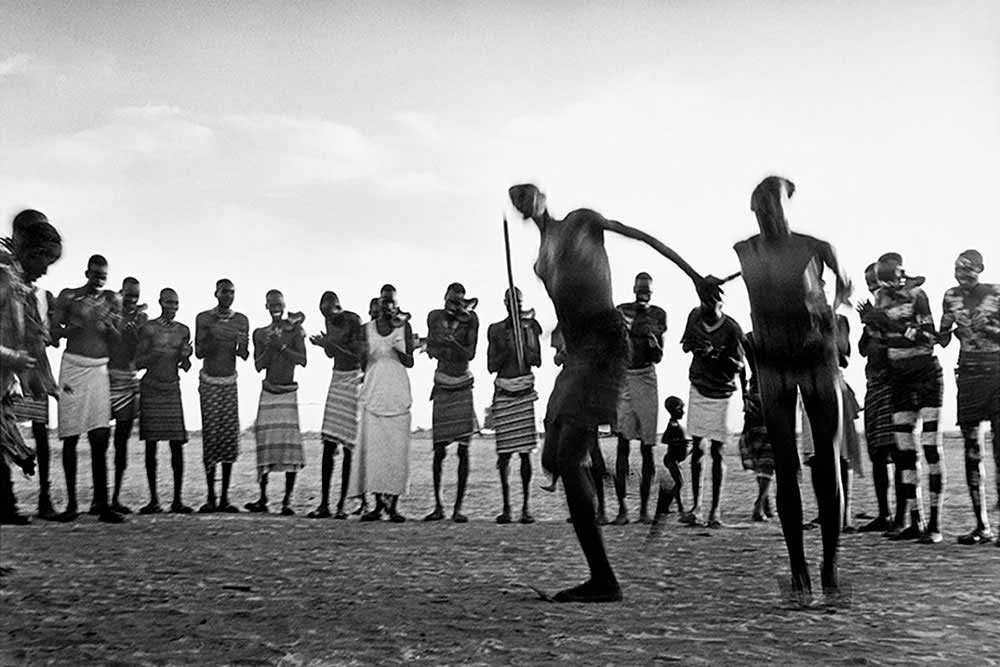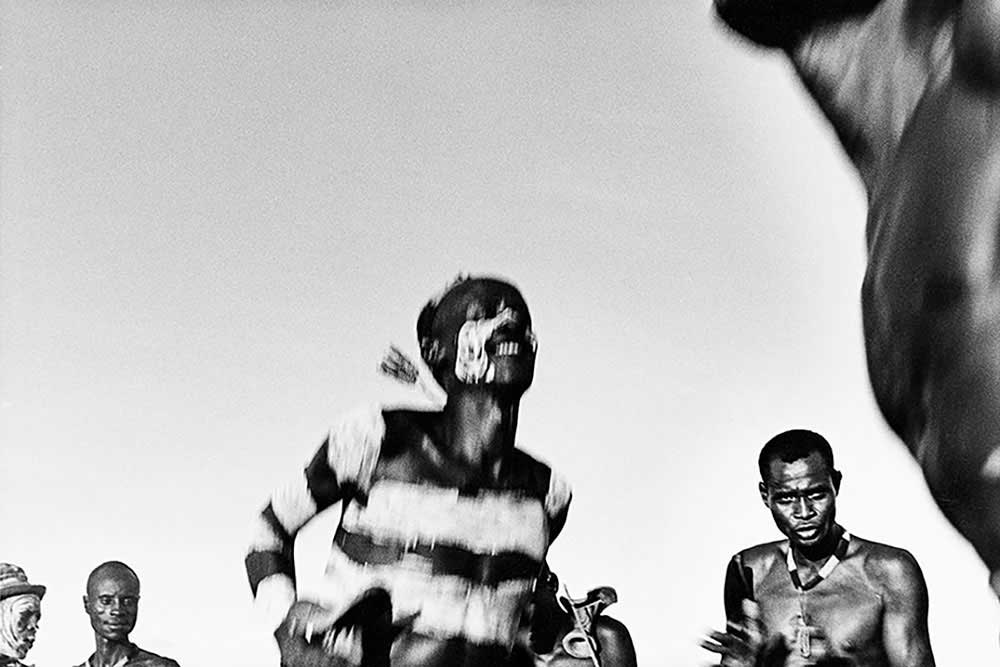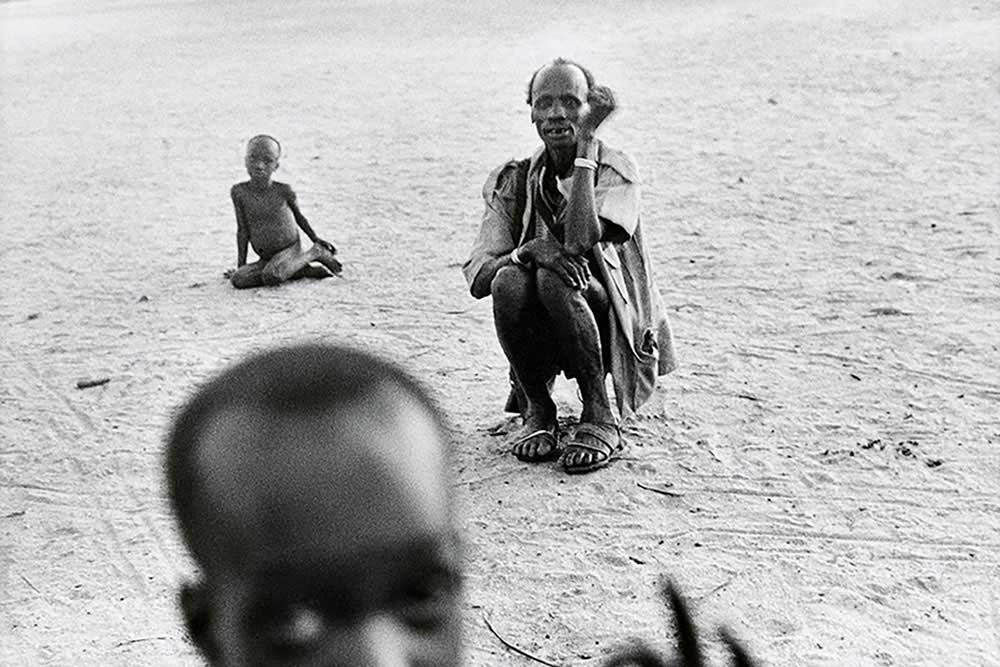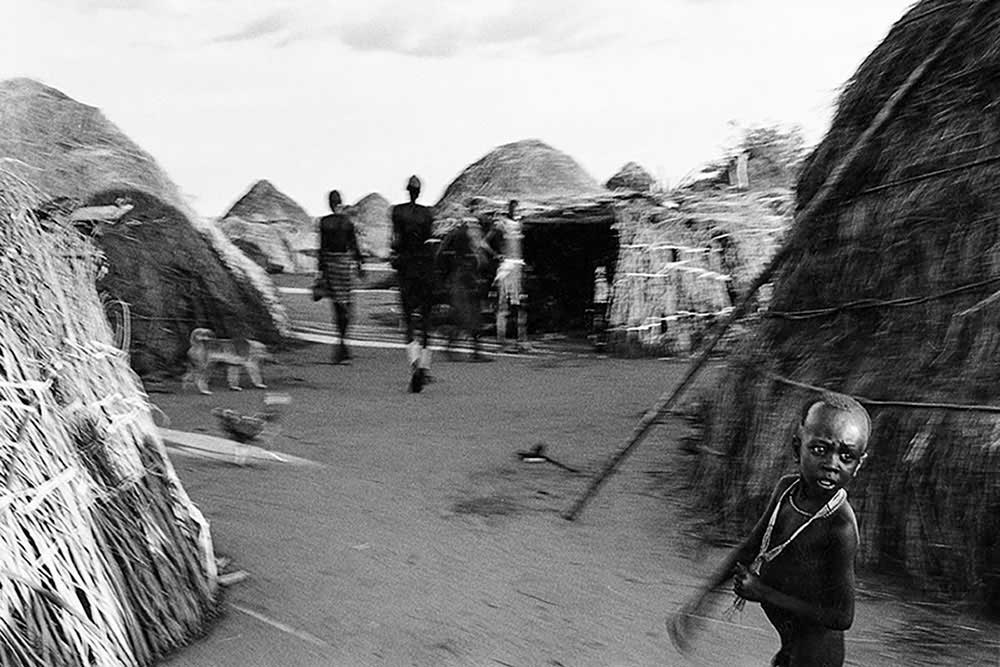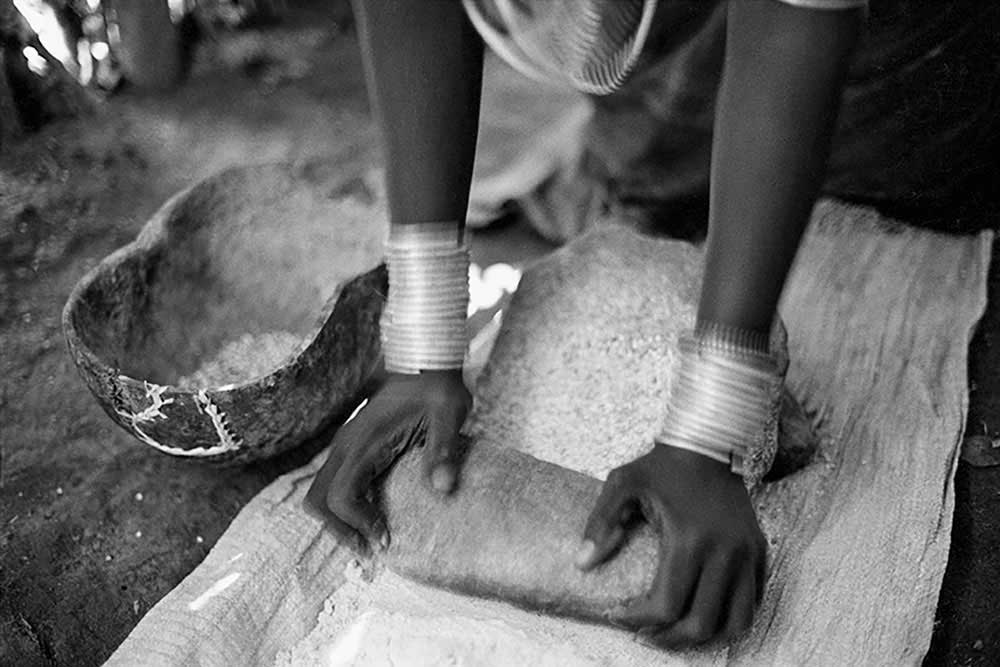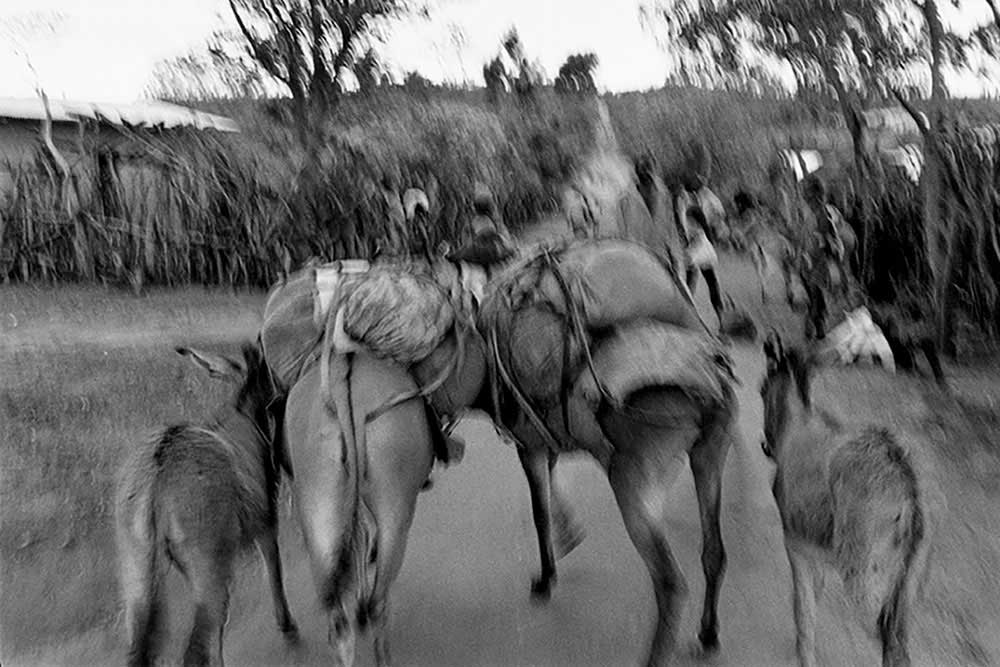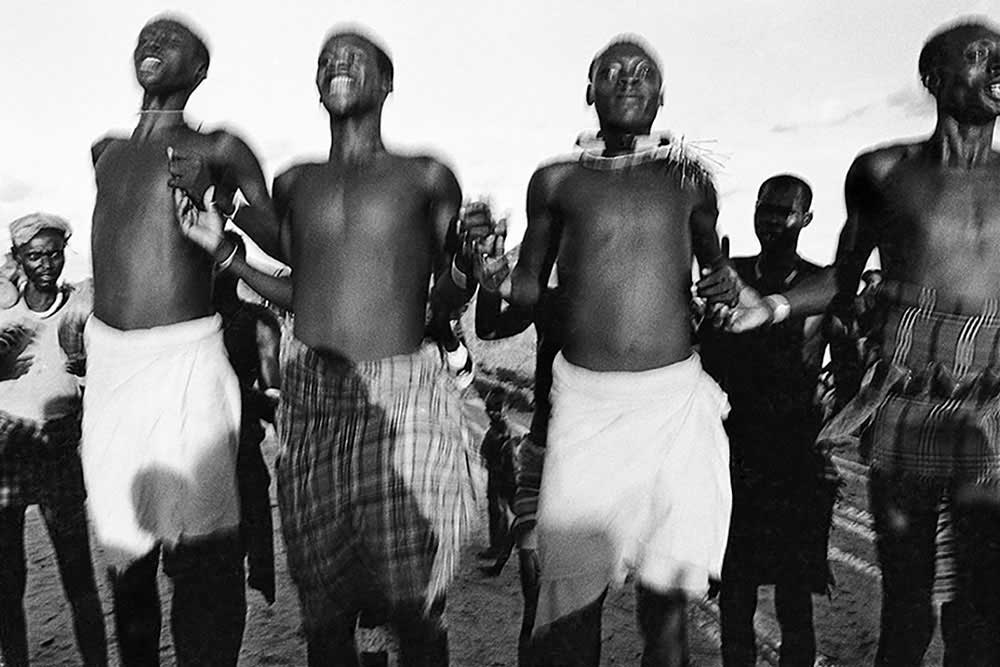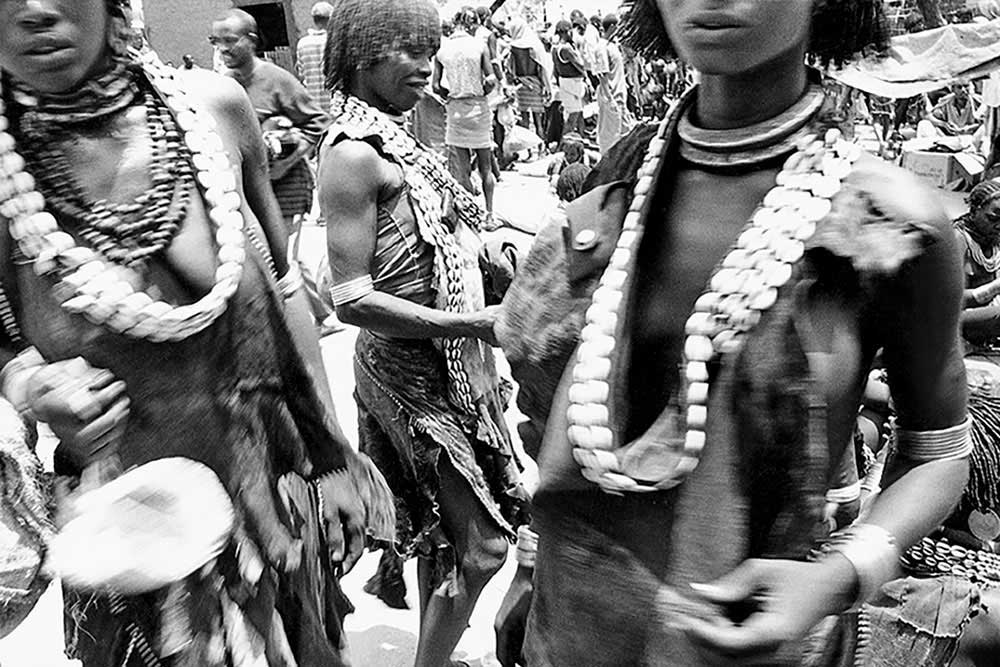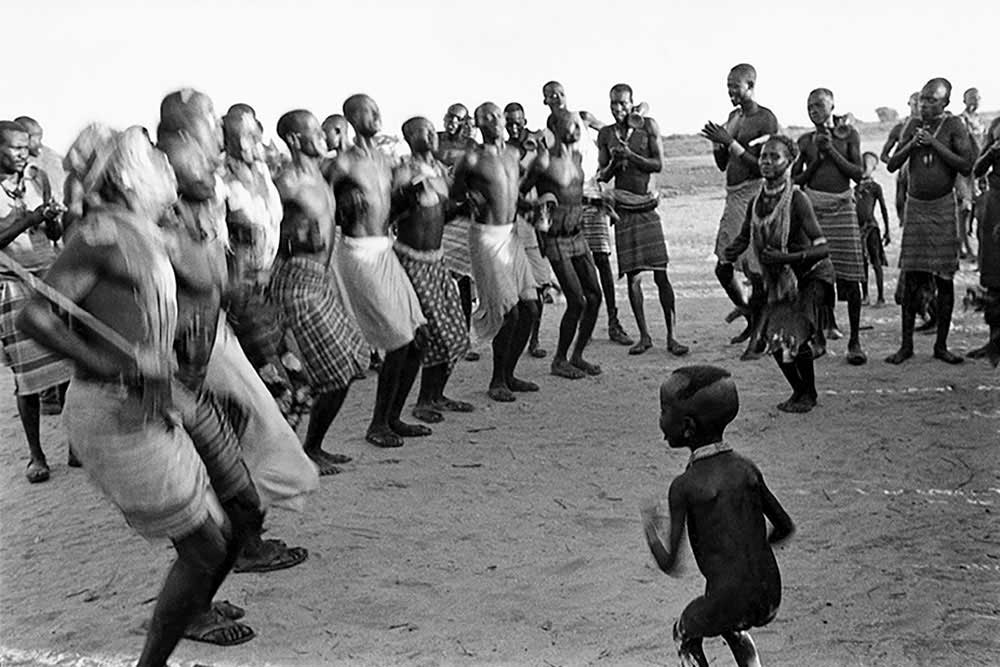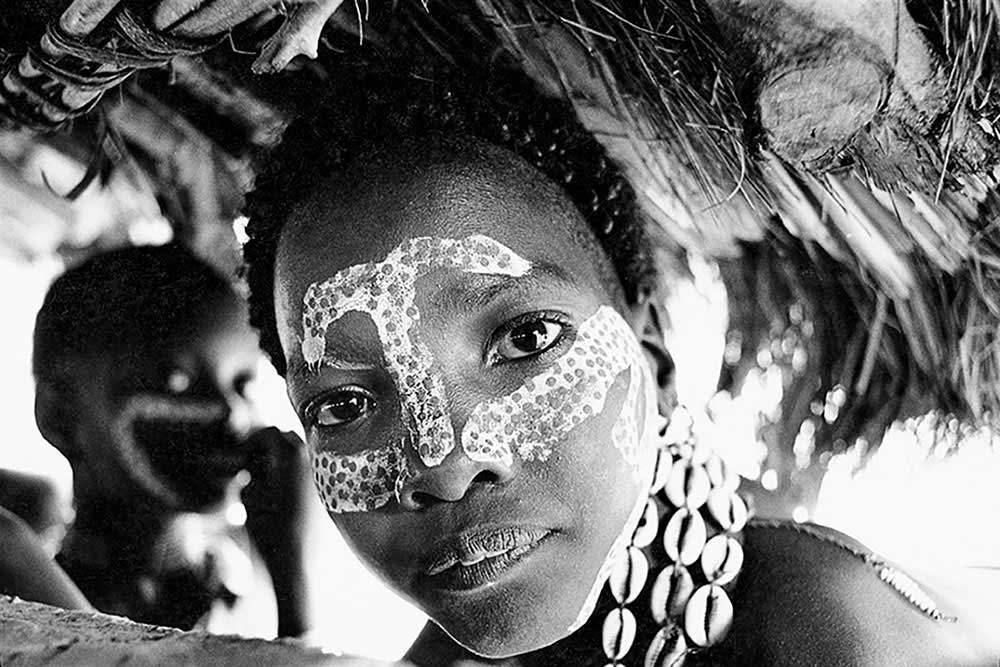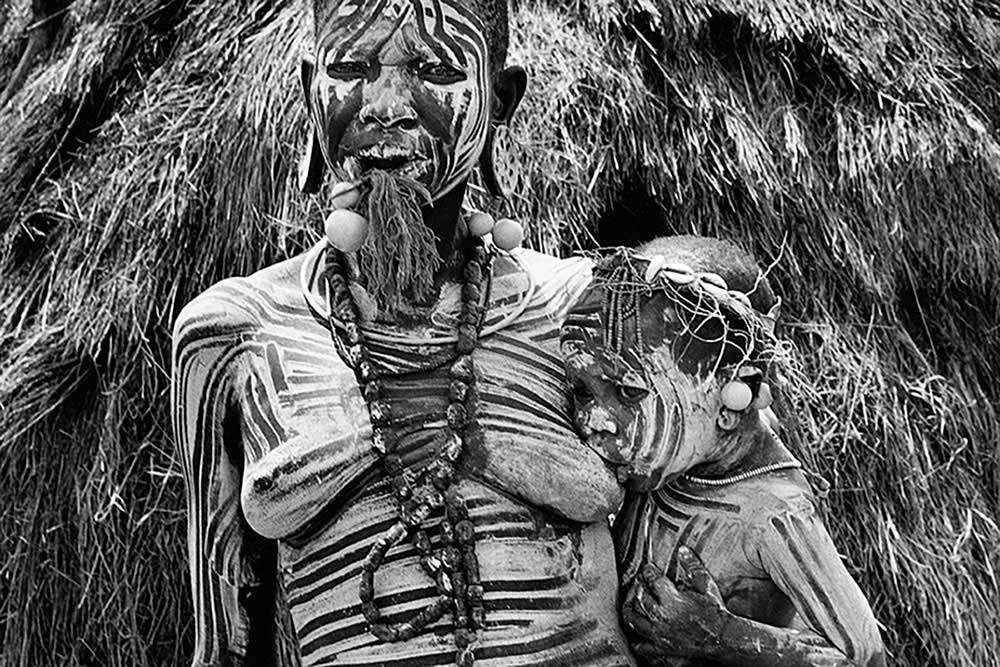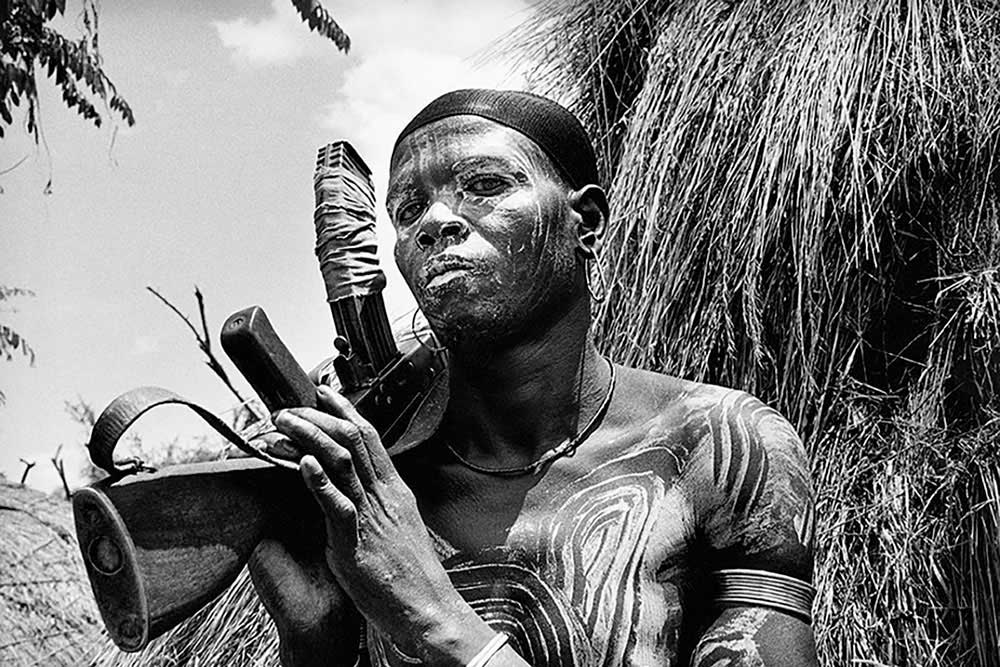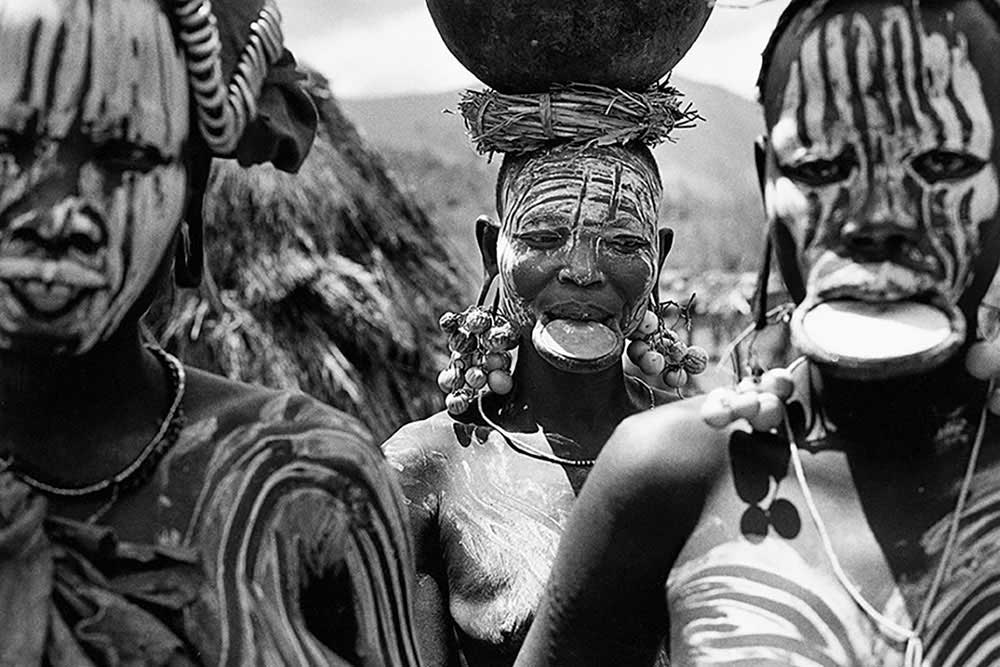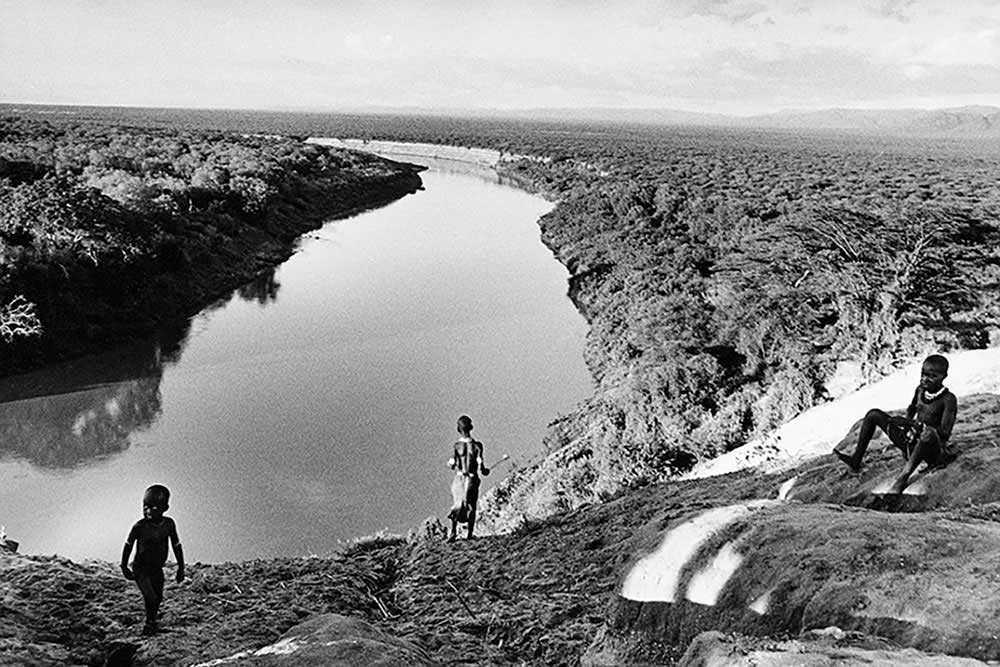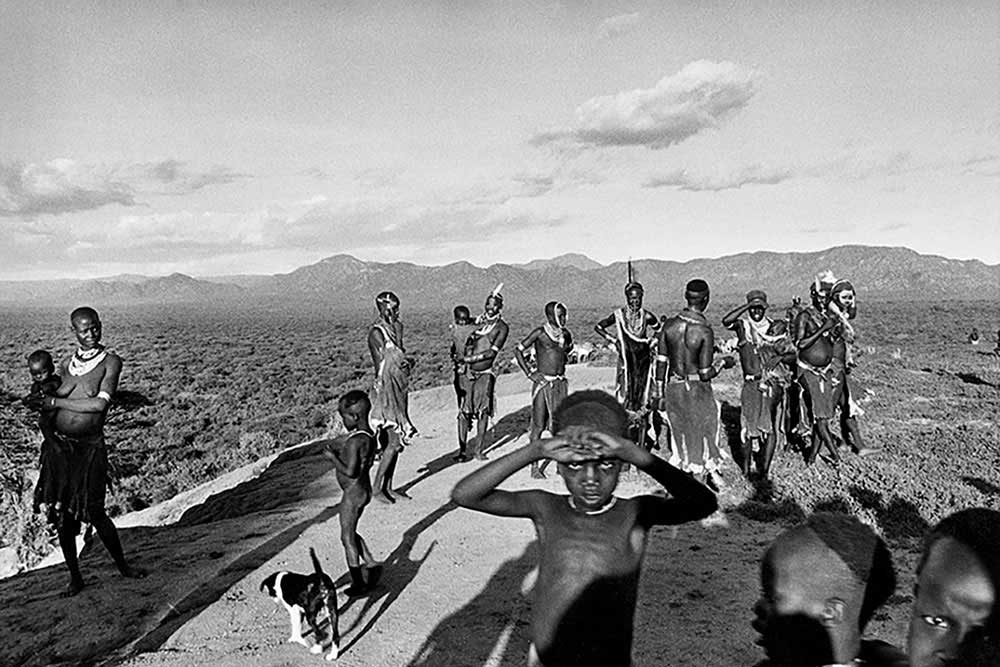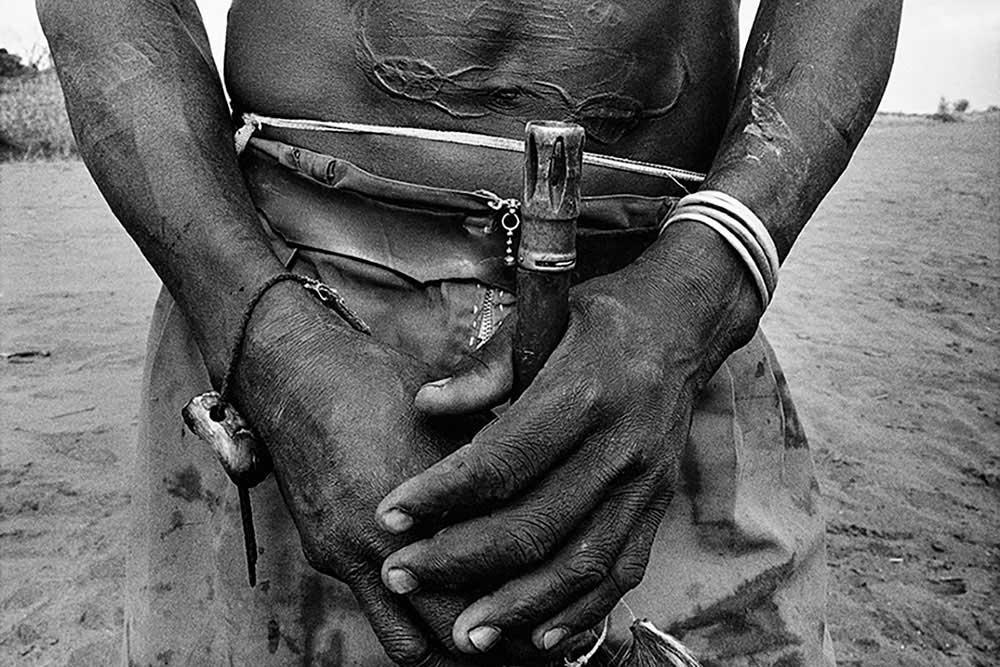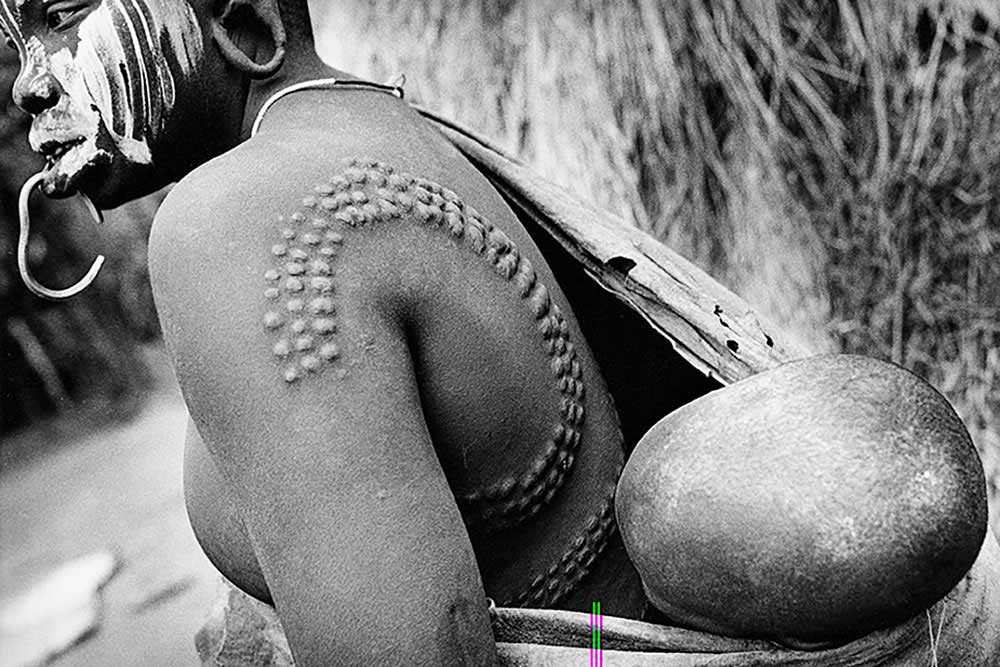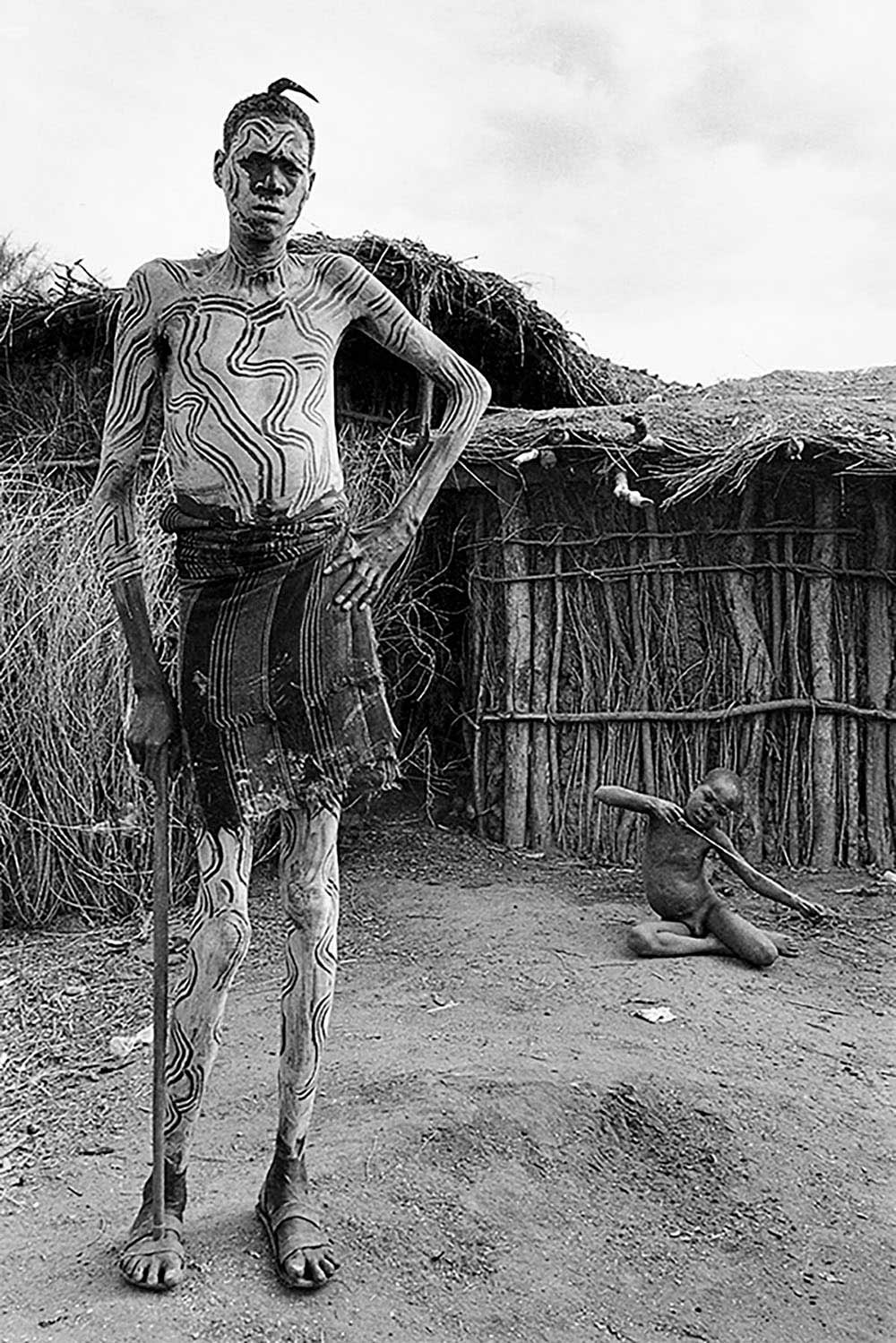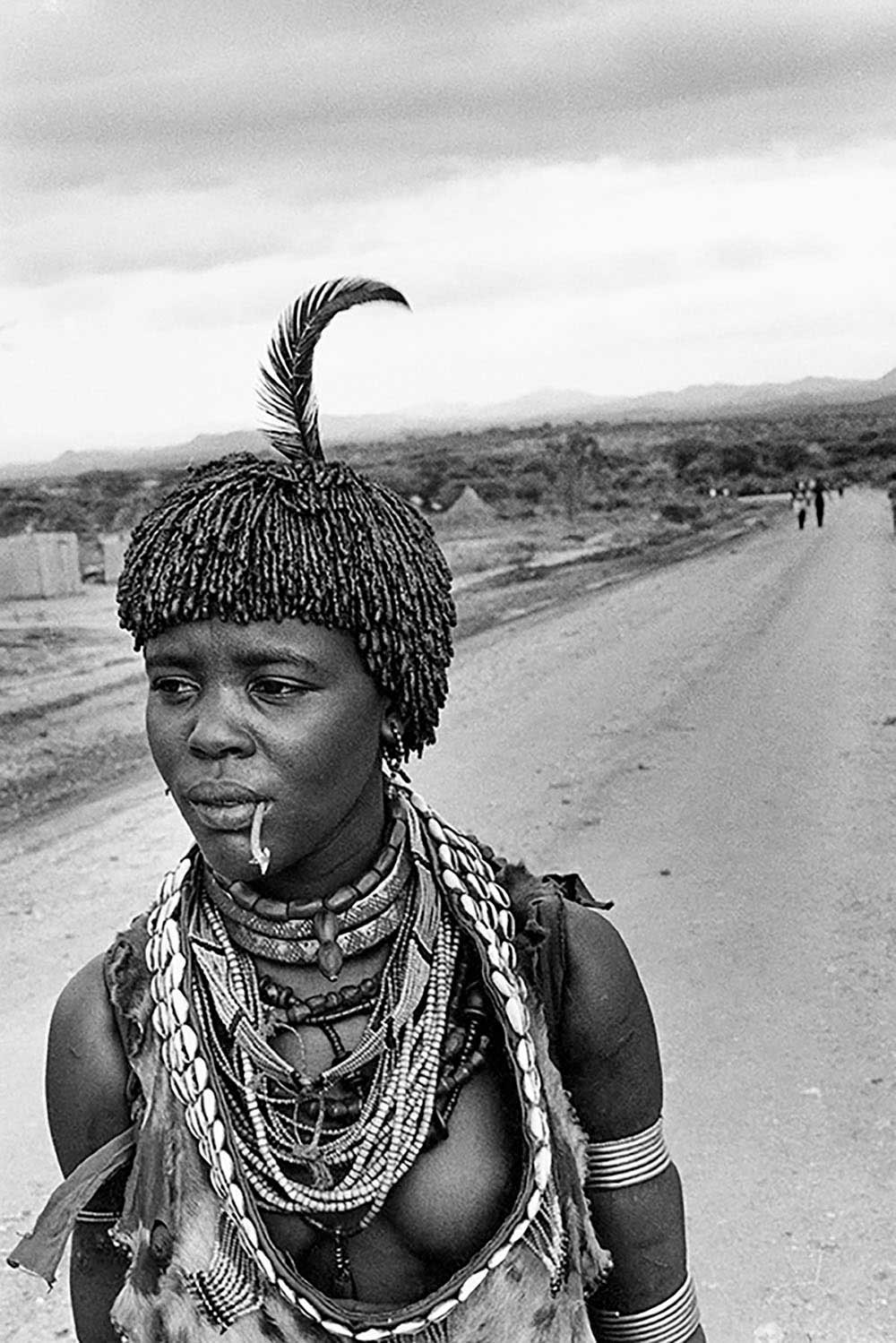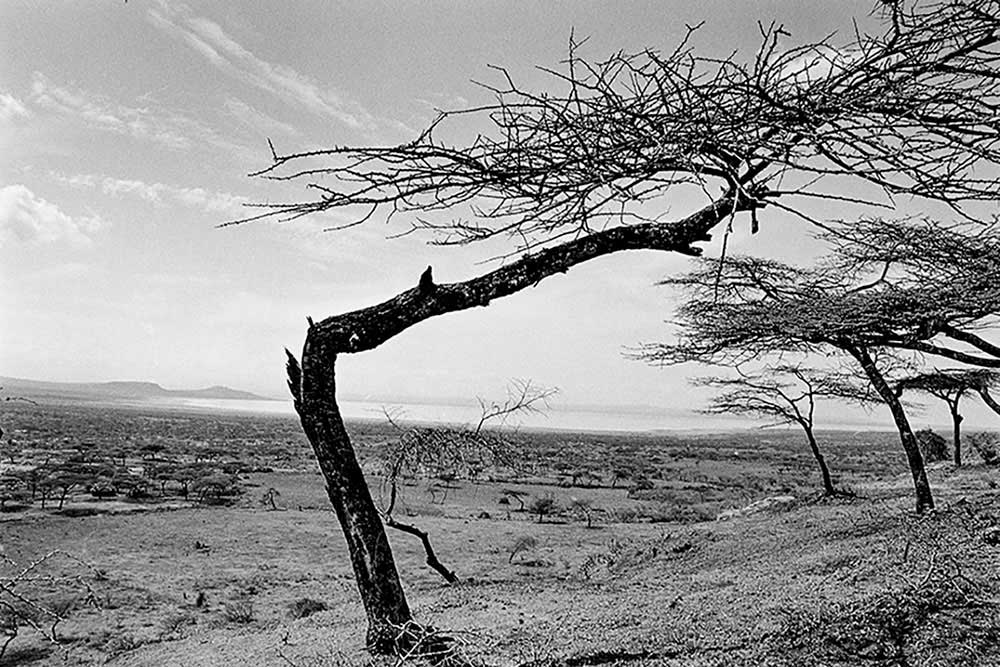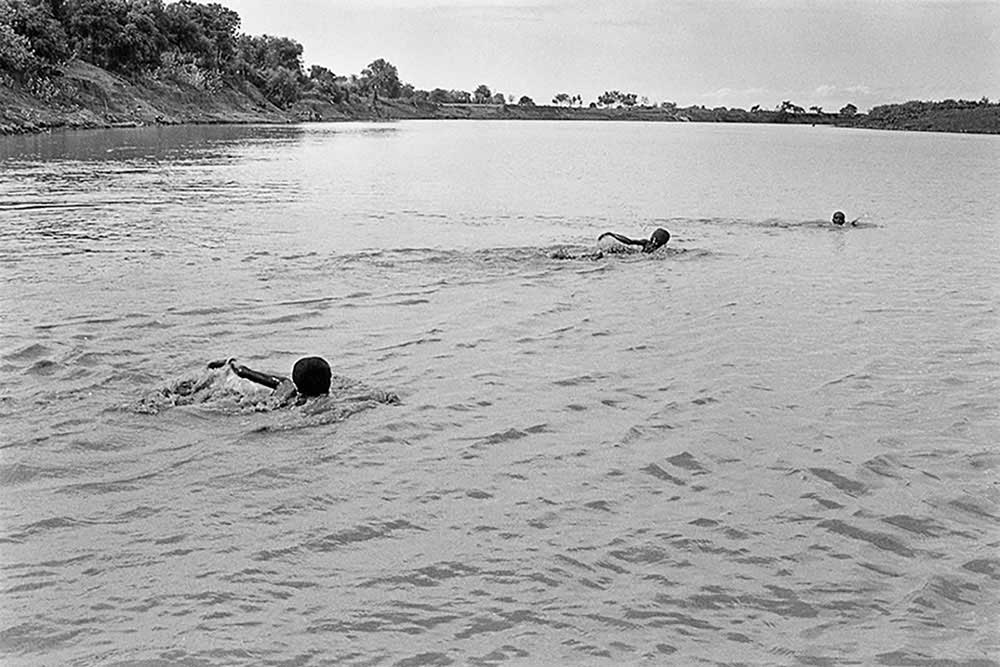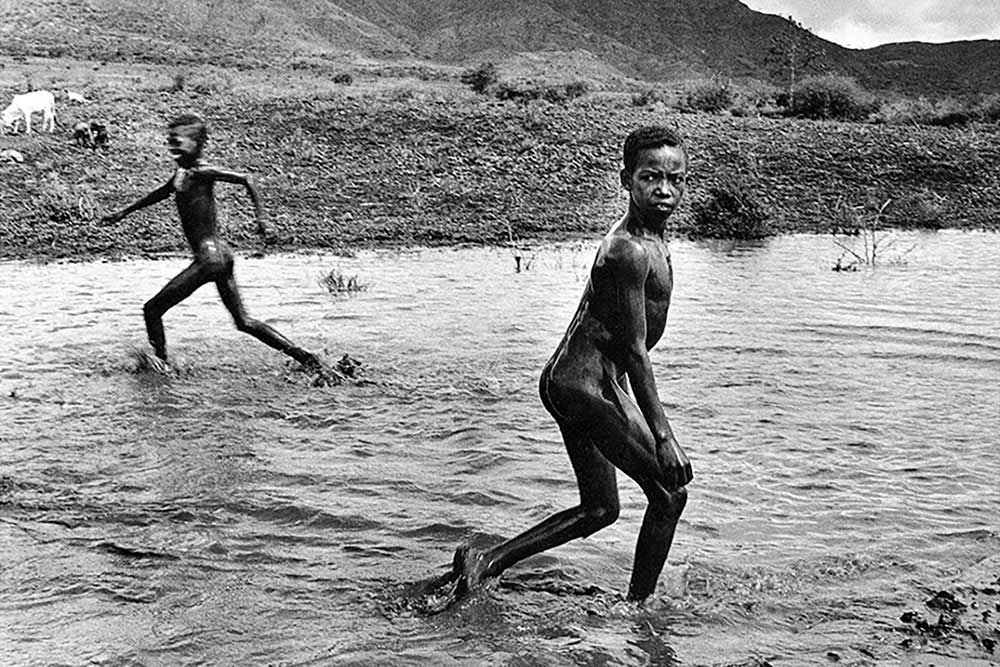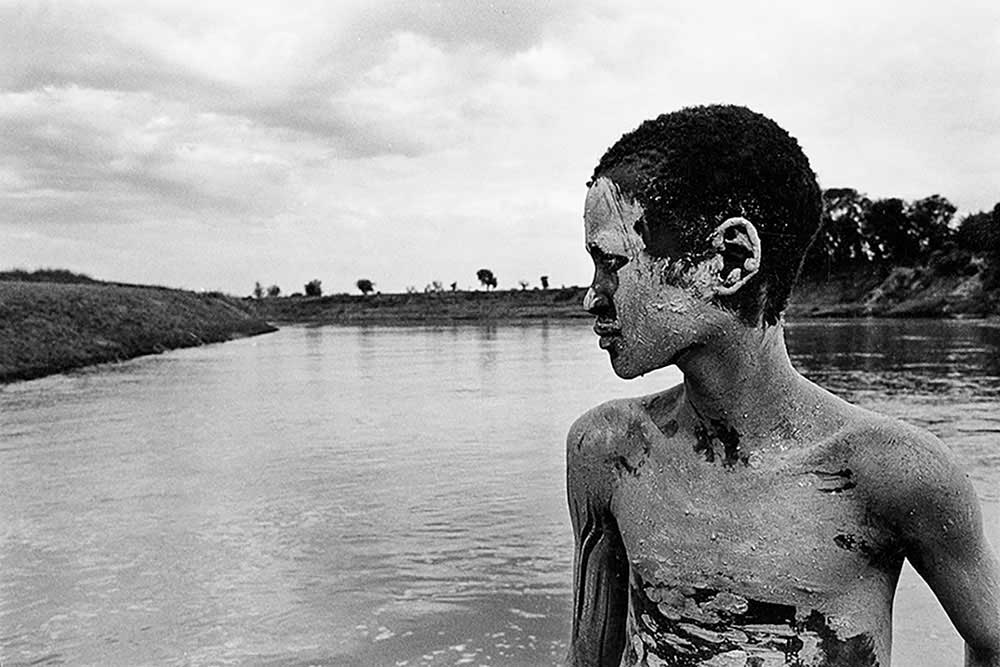A piece of primitive, wild Africa. Men with Kalashnikovs driving herds of cattle along red-dirt paths to the banks of the river.
Processions of women walking to the Omo River, returning with huge gourds filled with water balanced on their heads. Fishermen with sleek bodies revealing deep scars hoisting large fish onto their backs and carrying them to the shade of the nearest tree. Young boatmen deftly wielding long poles, navigating the treacherous current, coaxing their log canoes to the muddy banks of the opposite shore.
The Omo River valley is home to fishermen, sedentary farmers, semi-nomadic hunters, transhumant shepherds, cattle herders, for whom their cows are everything, and warriors carrying more rifles than spears. Like in the rest of Africa, it’s the women who keep the families and social units together. Peoples divided by contrasting territorial claims and cattle rights, but united in their shared struggle to cope with the same daunting challenges: scarce resources, the relentless search for food in the hope of achieving a rudimentary level of well-being. The threat of diseases such as malaria and sleeping sickness is constant and endemic. Sustenance agriculture and an archaic economy enable them to eek out a living.
The traditions of the Omo River peoples are based on a hybrid mix of practices and shared beliefs. Their festivals, periods of communal mourning and special annual events (the battles with staffs, the Hamer bull jumping ceremonies, the dances commemorating moments of joy) constitute enthralling rural occasions that are both simple and complex.
The Omo River area is a melting pot of different ethnic groups. The Galeb people are elegant and haughty; the Mursi are famous for their impressive (suggerisco invece: grotesque) lip plates; sculptors of sophisticated totems, the Konso are also expert farmers and skilled artisans. The Hamer are friendly, peace-loving and fascinating; the Surma, residing on the western side of the Omo, are bellicose and diffident; the Karo are easily agitated and surly.The Dorze are considered to be the best weavers in all of Ethiopia. And, finally, living along the border with Kenya, one finds the Borana people, notable for their Gadda system, a limited democratic socio-political arrangement.
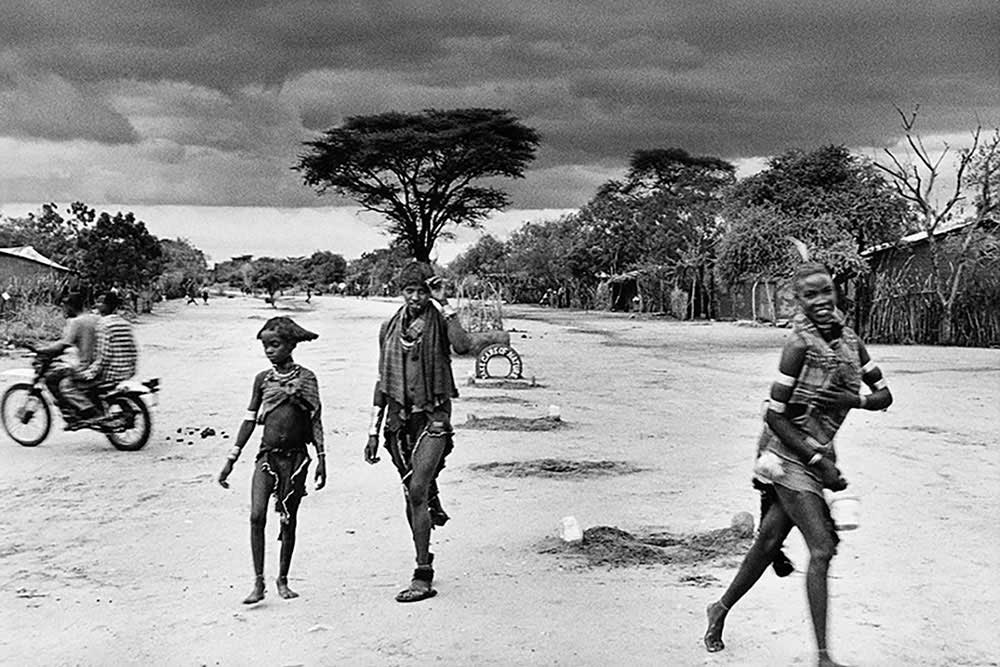
About Antonella Monzoni
Antonella Monzoni lives in Modena, Italy. She has a photojournalistic and at the same time intimist approach and her photography is aimed at preserving cultural memory. In her work, places and symbols become signs of belonging.
That is especially true in Madame, which won the 2007 Giacomelli Award and was selected for the 2008 Descubrimientos PhotoEspaña Award, Somewhere in Russia (2007 Chatwin Award) and Silent Beauty (Special Mention at the 2008 International Photography Awards).
In 2009 she received a Special Mention at the Amnesty International Human Rights Festival, was shortlisted as a finalist at the Ponchielli Award and was selected for the Visa pour l’Image international photojournalism festival in Perpignan. In 2009 she also won the Best Photographer Award at the Saint Petersburg Photo Vernissage and in 2010 she was named Author of the Year by the FIAF (Italian Federation of Photographic Associations). She has been a member of the Synap(see) Collective since 2011. In 2012 she won first prize at the VIPA (Vienna International Photo Awards). In 2013 she was shortlisted as a finalist at the Lo Sguardo di Giulia Award, set up by Gi-U.Li.A. (Free and Independent Women Journalists), on the theme: Call it violence, not love. In 2015 she won the International Award “Scanno dei Fotografi”. She has taken part in several group and solo exhibitions in Italy and abroad. In 2016 her book Ferita Armena received the Marco Bastianelli Award as the “Best Italian Photographic Book of the year”. [Official Website]



